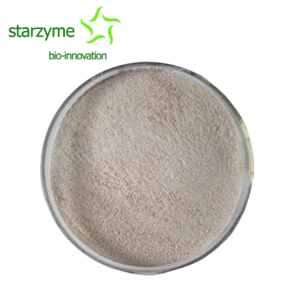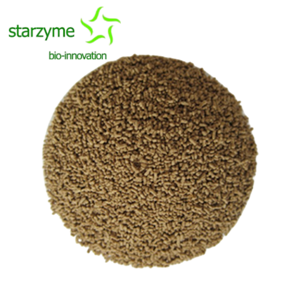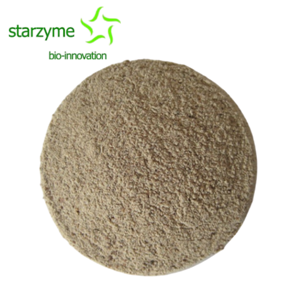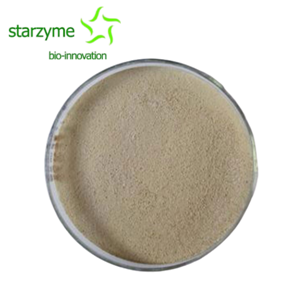Mannanase, Phytase, and Compound Enzyme Preparations
β - Mannanase for feed enzyme
β - mannanase, derived from Bacillus and Penicillium, is most suitable for pH 5.0-7.0 and has moderate temperature resistance (40-50 ℃). Mannanase can hydrolyze the β -1,4-glycosidic bond of the main chain of mannan to generate mannan oligosaccharides. Mannanase can decompose β - mannan in soybean meal and coconut meal, reduce anti nutritional effects, and improve the utilization rate of plant protein in aquatic feed.
Phytase for feed enzyme
Phytase is a feed enzyme where acidic phosphatase that hydrolyzes phytic acid (inositol hexaphosphate) into inositol and available inorganic phosphorus. 60% -90% of phosphorus in plant-based feed exists in the form of phytate phosphorus, but it cannot be directly utilized by monogastric animals such as pigs and chickens. Adding a feed enzyme like phytase can increase phosphorus utilization by 40% -75%, reduce the amount of inorganic phosphorus (such as calcium hydrogen phosphate) added to feed, and save costs. Feed enzymes relieve anti nutritional effects: Phytic acid can chelate minerals and proteins such as calcium, zinc, and iron, reducing their absorption rate; Phytase breaks down phytic acid to release bound nutrients.
Compound enzymes for feed enzyme
Compound enzymes combine different enzymes (such as xylanase+cellulase) to more efficiently decompose complex substrates (such as plant cell walls) and release more nutrients (such as starch and protein). Because more nutrients are released, the concentration of nutrients can be reduced, thereby lowering costs. Compound feed enzymes can be designed with specialized enzyme profiles based on animal species (such as broiler chickens and piglets) and feed types (wheat type, miscellaneous meal type) to reduce feed costs.
Compound enzymes are a combination of multiple enzymes, and the most sensitive one should be considered during storage and use to prevent enzyme inactivation during storage and use. Feed enzymes have specificity, and changes in the type of enzyme should be considered when using them, taking into account changes in feed ingredients (substrates).
Compound enzymes are feed enzyme preparations formed by the fusion of multiple single enzymes (such as xylanase, cellulase, β - glucanase, etc.) through mixing or genetic engineering technology. Single enzymes are very common yet distinct enzymes capable of many responsibilities when it comes to aiding the health and growth of animals when used as a feed enzmye additive in animal husbandry. They can synergistically degrade anti nutritional factors in feed and improve nutrient utilization efficiency.




